(2E)-3-(2-Chloro-5-nitrophenyl)acrylic acid
Modify Date: 2025-08-24 23:12:36
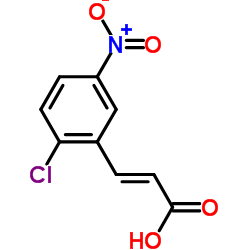
(2E)-3-(2-Chloro-5-nitrophenyl)acrylic acid structure
|
Common Name | (2E)-3-(2-Chloro-5-nitrophenyl)acrylic acid | ||
|---|---|---|---|---|
| CAS Number | 36015-19-7 | Molecular Weight | 227.601 | |
| Density | 1.5±0.1 g/cm3 | Boiling Point | 401.7±35.0 °C at 760 mmHg | |
| Molecular Formula | C9H6ClNO4 | Melting Point | 218-222 °C | |
| MSDS | N/A | Flash Point | 196.7±25.9 °C | |
| Name | 2-chloro-5-nitrocinnamic acid |
|---|---|
| Synonym | More Synonyms |
| Density | 1.5±0.1 g/cm3 |
|---|---|
| Boiling Point | 401.7±35.0 °C at 760 mmHg |
| Melting Point | 218-222 °C |
| Molecular Formula | C9H6ClNO4 |
| Molecular Weight | 227.601 |
| Flash Point | 196.7±25.9 °C |
| Exact Mass | 226.998535 |
| PSA | 83.12000 |
| LogP | 2.75 |
| Vapour Pressure | 0.0±1.0 mmHg at 25°C |
| Index of Refraction | 1.663 |
| InChIKey | IHTLKLSRRSWIGD-DAFODLJHSA-N |
| SMILES | O=C(O)C=Cc1cc([N+](=O)[O-])ccc1Cl |
Synonym:3-(2-Chloro-5-Nitrophenyl)acrylic Aci Section 2 - COMPOSITION, INFORMATION ON INGREDIENTS
Risk Phrases: None Listed. Section 3 - HAZARDS IDENTIFICATION EMERGENCY OVERVIEW
The toxicological properties of this material have not been fully investigated. Potential Health Effects Eye: May cause eye irritation. Skin: May cause skin irritation. Ingestion: May cause irritation of the digestive tract. The toxicological properties of this substance have not been fully investigated. Inhalation: May cause respiratory tract irritation. The toxicological properties of this substance have not been fully investigated. Chronic: No information found. Section 4 - FIRST AID MEASURES Eyes: Flush eyes with plenty of water for at least 15 minutes, occasionally lifting the upper and lower eyelids. Get medical aid. Skin: Get medical aid. Flush skin with plenty of water for at least 15 minutes while removing contaminated clothing and shoes. Wash clothing before reuse. Ingestion: Never give anything by mouth to an unconscious person. Get medical aid. Do NOT induce vomiting. If conscious and alert, rinse mouth and drink 2-4 cupfuls of milk or water. Wash mouth out with water. Inhalation: Remove from exposure and move to fresh air immediately. If not breathing, give artificial respiration. If breathing is difficult, give oxygen. Get medical aid. Notes to Physician: Section 5 - FIRE FIGHTING MEASURES General Information: As in any fire, wear a self-contained breathing apparatus in pressure-demand, MSHA/NIOSH (approved or equivalent), and full protective gear. During a fire, irritating and highly toxic gases may be generated by thermal decomposition or combustion. Extinguishing Media: Use agent most appropriate to extinguish fire. Use water spray, dry chemical, carbon dioxide, or appropriate foam. Section 6 - ACCIDENTAL RELEASE MEASURES General Information: Use proper personal protective equipment as indicated in Section 8. Spills/Leaks: Vacuum or sweep up material and place into a suitable disposal container. Clean up spills immediately, observing precautions in the Protective Equipment section. Avoid generating dusty conditions. Provide ventilation. Section 7 - HANDLING and STORAGE Handling: Wash thoroughly after handling. Use with adequate ventilation. Minimize dust generation and accumulation. Avoid contact with eyes, skin, and clothing. Keep container tightly closed. Avoid ingestion and inhalation. Storage: Store in a tightly closed container. Store in a cool, dry, well-ventilated area away from incompatible substances. Section 8 - EXPOSURE CONTROLS, PERSONAL PROTECTION Engineering Controls: Facilities storing or utilizing this material should be equipped with an eyewash facility and a safety shower. Use adequate ventilation to keep airborne concentrations low. Exposure Limits CAS# 36015-19-7: Personal Protective Equipment Eyes: Wear appropriate protective eyeglasses or chemical safety goggles as described by OSHA's eye and face protection regulations in 29 CFR 1910.133 or European Standard EN166. Skin: Wear appropriate protective gloves to prevent skin exposure. Clothing: Wear appropriate protective clothing to prevent skin exposure. Respirators: A respiratory protection program that meets OSHA's 29 CFR 1910.134 and ANSI Z88.2 requirements or European Standard EN 149 must be followed whenever workplace conditions warrant respirator use. Section 9 - PHYSICAL AND CHEMICAL PROPERTIES Physical State: Powder Color: yellow crystalline powder Odor: Not available. pH: Not available. Vapor Pressure: Not available. Viscosity: Not available. Boiling Point: Not available. Freezing/Melting Point: 218 - 220 deg C Autoignition Temperature: Not applicable. Flash Point: Not applicable. Explosion Limits, lower: Not available. Explosion Limits, upper: Not available. Decomposition Temperature: Solubility in water: Specific Gravity/Density: Molecular Formula: C9H6ClNO4 Molecular Weight: 227.61 Section 10 - STABILITY AND REACTIVITY Chemical Stability: Stable at room temperature in closed containers under normal storage and handling conditions. Conditions to Avoid: Incompatible materials, dust generation, excess heat. Incompatibilities with Other Materials: Strong bases, strong oxidizing agents. Hazardous Decomposition Products: Hydrogen chloride, nitrogen oxides, carbon monoxide, irritating and toxic fumes and gases, carbon dioxide. Hazardous Polymerization: Has not been reported Section 11 - TOXICOLOGICAL INFORMATION RTECS#: CAS# 36015-19-7 unlisted. LD50/LC50: Not available. Carcinogenicity: 2-Chloro-5-Nitrocinnamic Acid - Not listed by ACGIH, IARC, or NTP. Section 12 - ECOLOGICAL INFORMATION Section 13 - DISPOSAL CONSIDERATIONS Dispose of in a manner consistent with federal, state, and local regulations. Section 14 - TRANSPORT INFORMATION IATA Not regulated as a hazardous material. IMO Not regulated as a hazardous material. RID/ADR Not regulated as a hazardous material. Section 15 - REGULATORY INFORMATION European/International Regulations European Labeling in Accordance with EC Directives Hazard Symbols: Not available. Risk Phrases: Safety Phrases: S 24/25 Avoid contact with skin and eyes. S 28A After contact with skin, wash immediately with plenty of water. S 37 Wear suitable gloves. S 45 In case of accident or if you feel unwell, seek medical advice immediately (show the label where possible). WGK (Water Danger/Protection) CAS# 36015-19-7: No information available. Canada None of the chemicals in this product are listed on the DSL/NDSL list. CAS# 36015-19-7 is not listed on Canada's Ingredient Disclosure List. US FEDERAL TSCA CAS# 36015-19-7 is not listed on the TSCA inventory. It is for research and development use only. SECTION 16 - ADDITIONAL INFORMATION N/A |
| Hazard Codes | Xi: Irritant; |
|---|---|
| Risk Phrases | R36/37/38 |
| Safety Phrases | S24/25 |
| HS Code | 2916399090 |
| HS Code | 2916399090 |
|---|---|
| Summary | 2916399090 other aromatic monocarboxylic acids, their anhydrides, halides, peroxides, peroxyacids and their derivatives VAT:17.0% Tax rebate rate:9.0% Supervision conditions:none MFN tariff:6.5% General tariff:30.0% |
| 2-Chloro-5-nitrocinnamicacid |
| 5-Nitro-2-chlorocinnamic acid |
| 2-Chloro-5-nitrocinnamic acid,predominantly trans |
| trans-2-Chloro-5-nitrocinnamic acid |
| RARECHEM BK HC T333 |
| 2-chloro-5-nitro-trans-cinnamic acid |
| 2-Chloro-5-nitrocinnaMic Acid |
| 2-Chlor-5-nitro-trans-zimtsaeure |
| MFCD00063312 |
| (2E)-3-(2-Chloro-5-nitrophenyl)acrylic acid |
| 2-Propenoic acid, 3-(2-chloro-5-nitrophenyl)-, (2E)- |
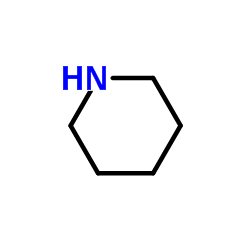 CAS#:110-89-4
CAS#:110-89-4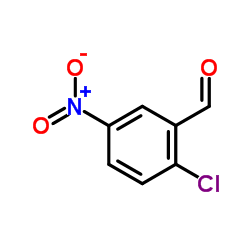 CAS#:6361-21-3
CAS#:6361-21-3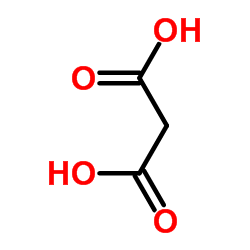 CAS#:141-82-2
CAS#:141-82-2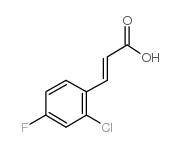 CAS#:133220-86-7
CAS#:133220-86-7